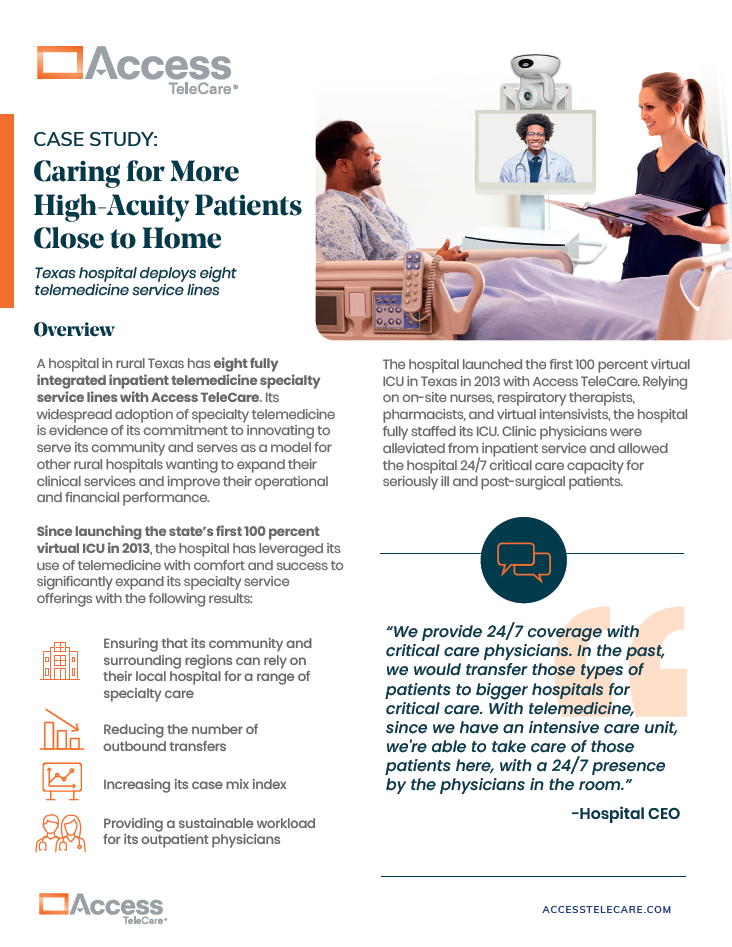The Future of Rural Health Care is in Texas
The hospital employs eight fully integrated specialty telemedicine service lines with Access TeleCare, including Texas’ first 100 percent virtual ICU.
Challenges
- Ensuring the local community and surrounding regions can rely on their local hospital for a range of specialty care: With limited availability of local specialists, the hospital needed timely access to acute care specialists.
- Reducing outbound transfers: The hospital was seeking a solution for reducing the number of patients requiring a transfer to a higher level of care due to a lack of local specialty coverage.
- Increasing the case mix index: An increase in case mix index was a top priority for the hospital as it sought to position itself as a specialty care hub for the region.
- Providing a sustainable workload for its outpatient physicians: Many physicians and nurses were covering patients at the hospital and nearby clinic, leading to high levels of burnout and an increased burden on on-site staff.
“Were it not for our ability to use telemedicine, we would not be able to take care of near the number of patients here, and that would greatly increase the number of patients that we would have to transfer out.”
– Hospital CMO
Since launching an Access TeleCare teleICU and telePulmonary/Critical Care program in 2013, the hospital continued to expand its telemedicine services and now has eight fully integrated telemedicine service lines.
See how Access TeleCare helps hospitals care for clinically complex patients close to home.
Solution
The hospital launched the first 100 percent virtual ICU in Texas in 2013 with Access TeleCare. Relying on on-site nurses, respiratory therapists, pharmacists, and other clinicians and on virtual intensivists, the hospital fully staffed its ICU, alleviating its clinic physicians from inpatient service and having 24/7 critical care capacity for seriously ill and post-surgical patients. Today, the hospital has eight inpatient specialty service lines delivered through telemedicine entirely or in part.
Results
Increased Case Mix Index
Increased Case Mix Index
Since the start of the program, the hospital’s CMI has increased 21 percent, from 1.16 to 1.40.
Increased Revenue
Increased Revenue
Since the start of the program, hospital revenue has increased more than 60 percent as the hospital reduced outbound transfers and retained more complex patients.
Superior Quality Outcomes
Superior Quality Outcomes
In 2023, the hospital performed at the 95th percentile in Sepsis bundle quality scoring. The hospitalists themselves consistently perform at above 80 percent in their portion of the quality measure.






